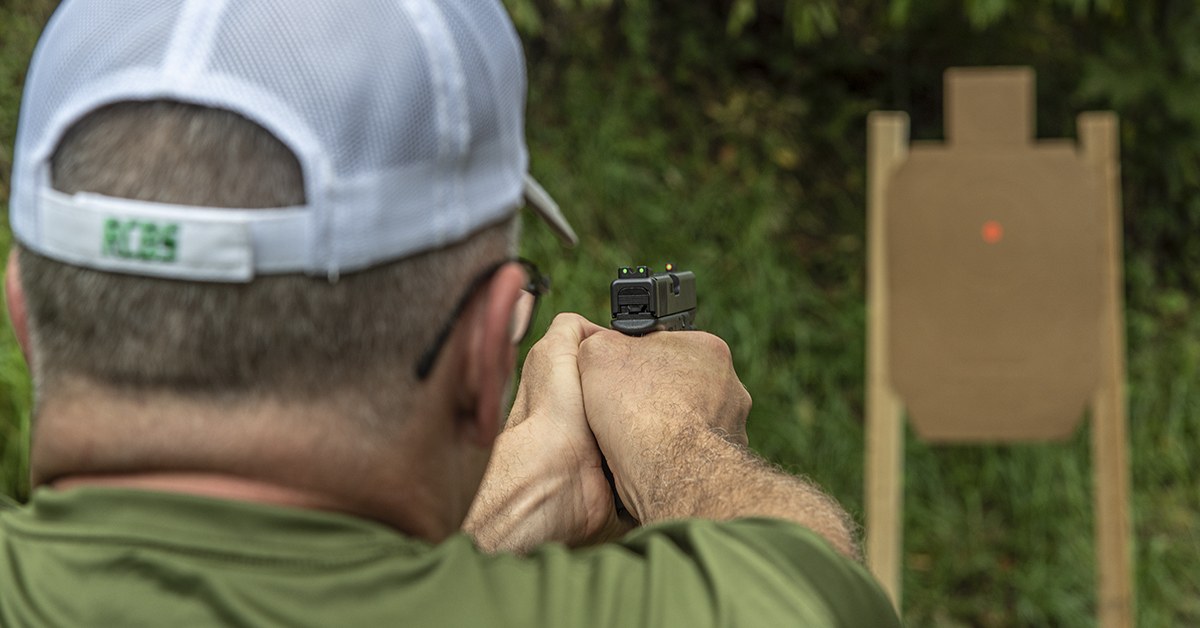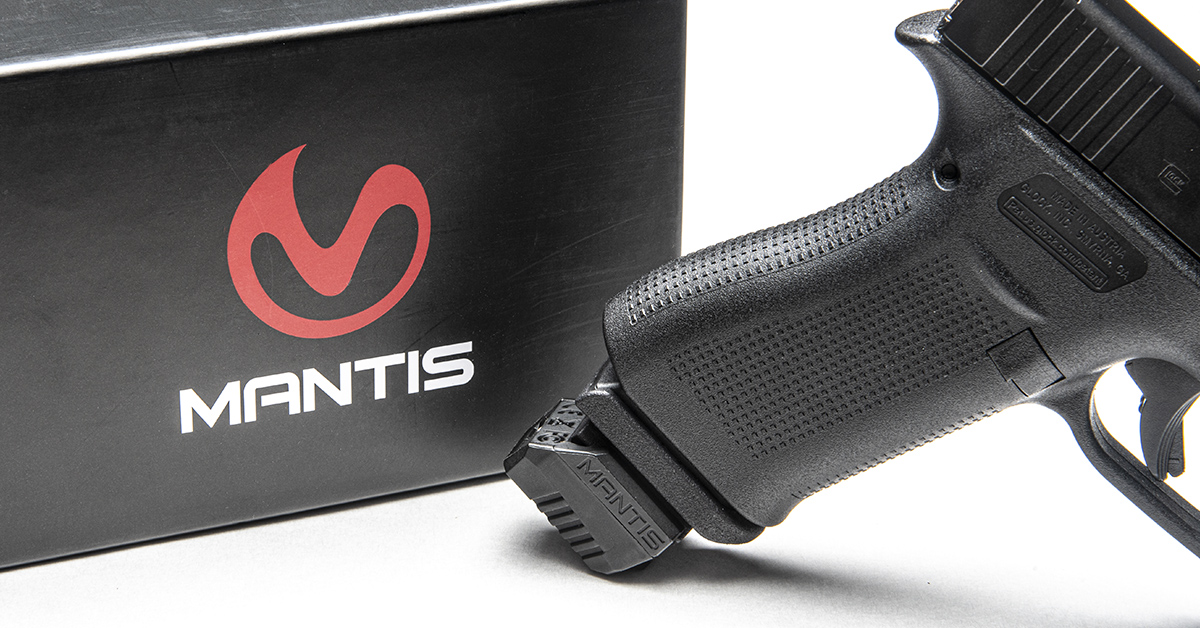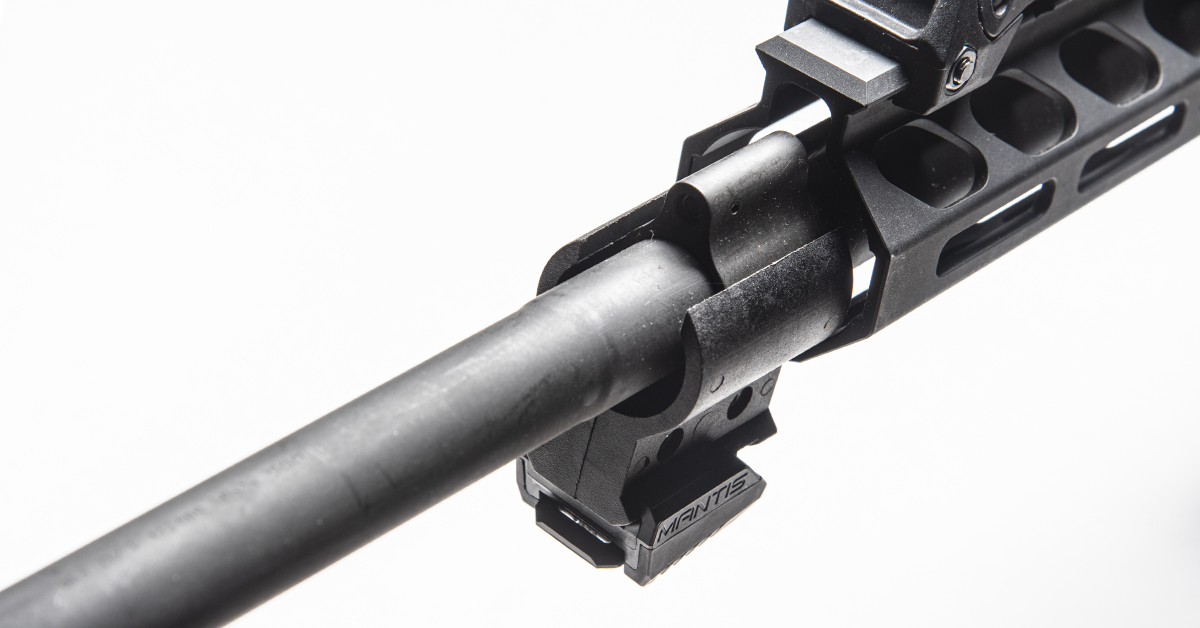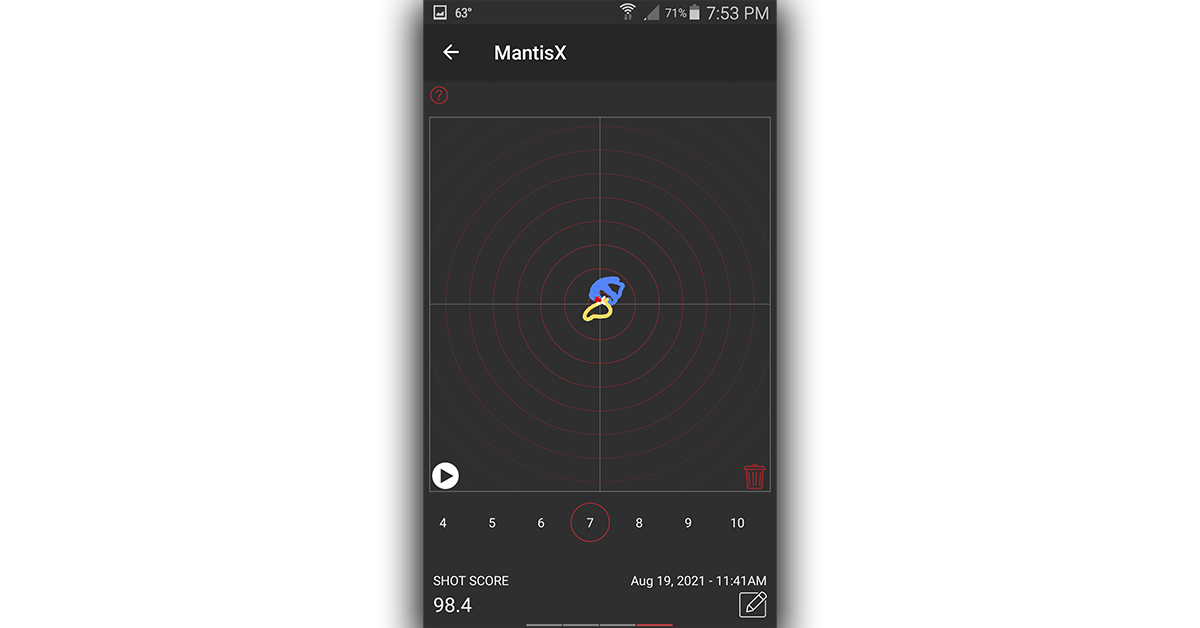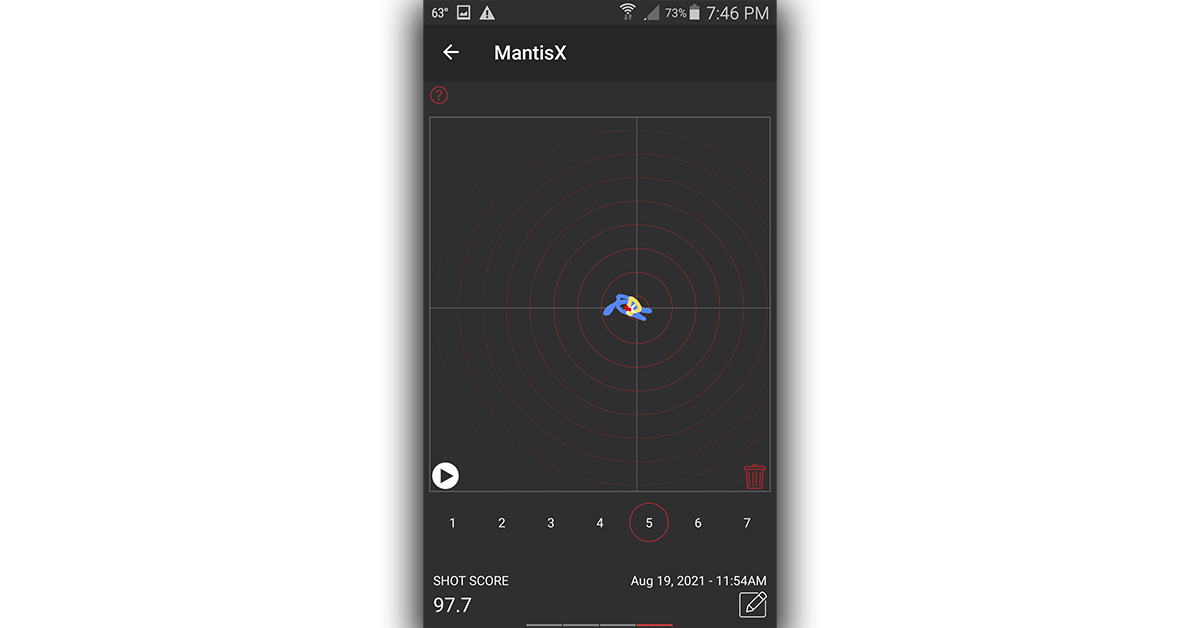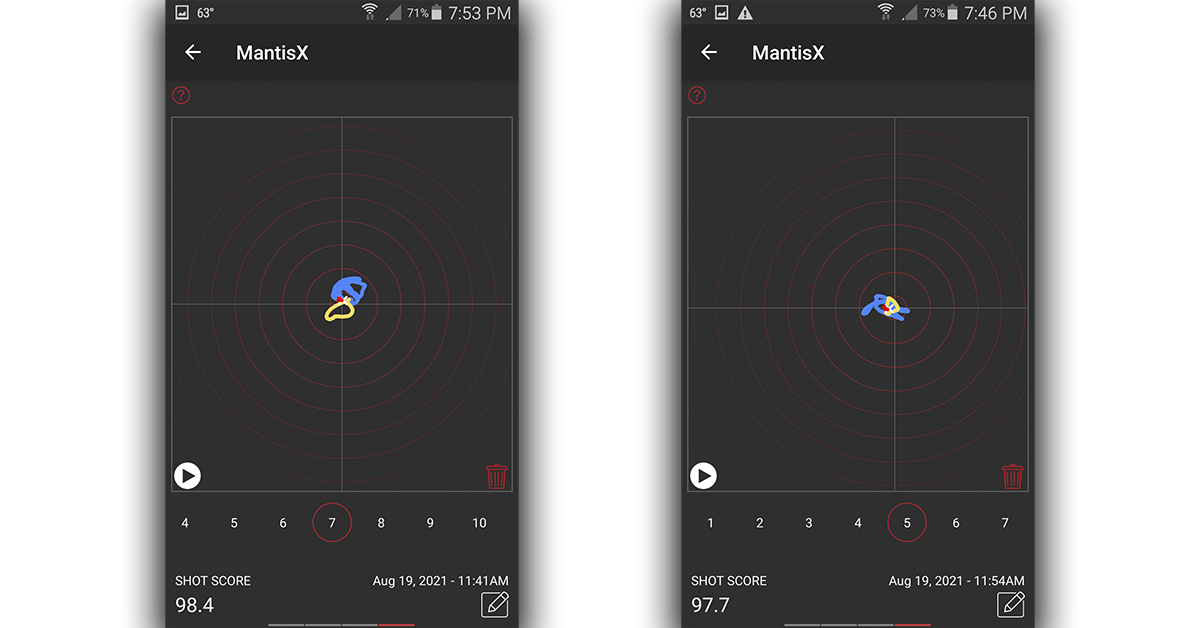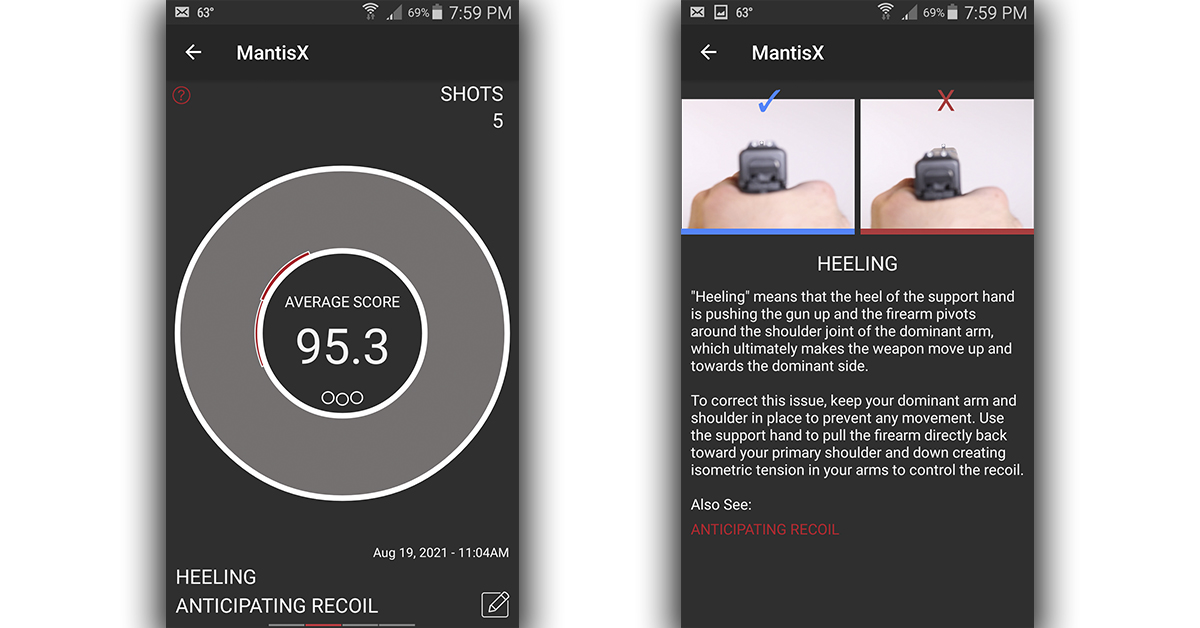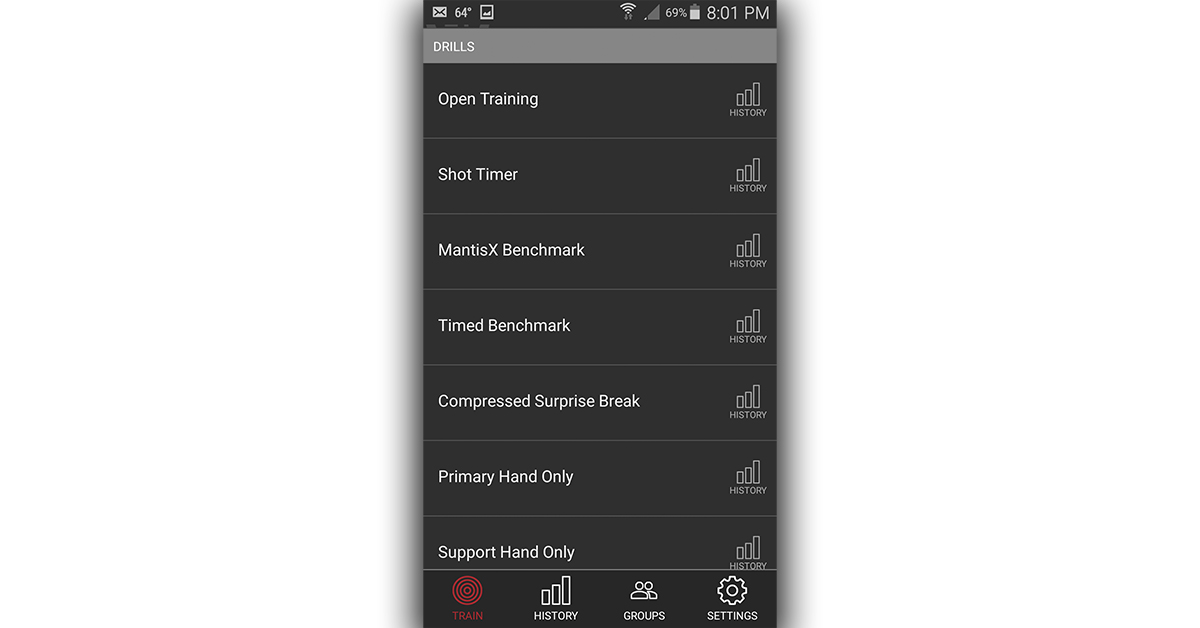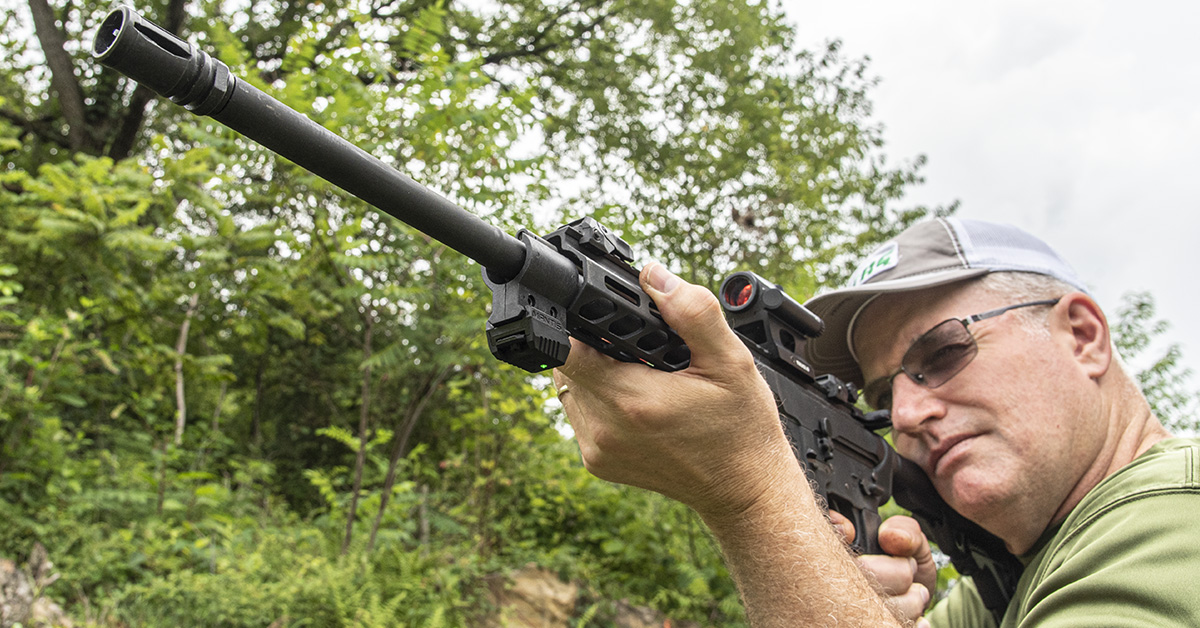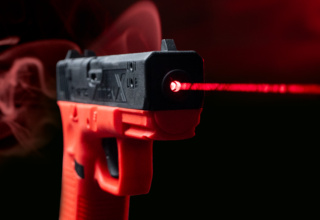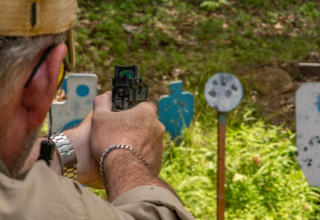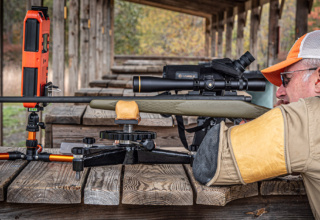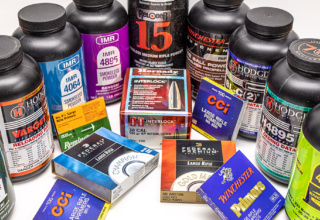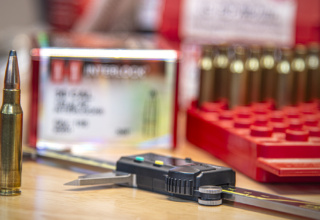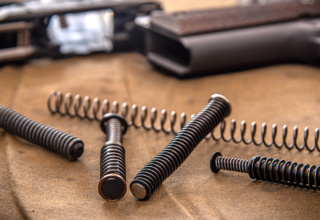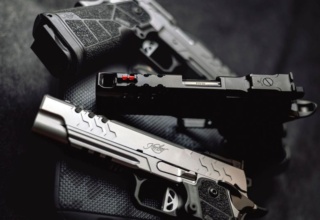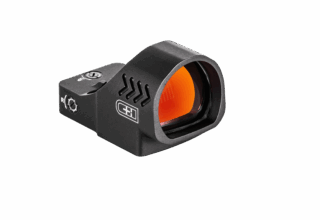That’s no “click bait” title…we really mean it! If you truly wish to improve your shooting technique and keep your skills sharp without breaking the bank, the MantisX training system is the answer.
by Lou Patrick
The U.S. military has been using dry fire practice as a marksmanship training aid for a long, long time. “Dry fire” is simply a term used to describe a marksmanship practice session in which ammunition is not used (nor should there be any ammunition anywhere near a dry fire training session, and we must also ensure that the firearm is unloaded).
There are several reasons the U.S. military has incorporated dry fire practice as a routine part of marksmanship training. First on the list is that it simply works! Secondly, it provides great flexibility, allowing effective marksmanship training to be accomplished anywhere, including in the comfort of your own home and whenever you have the time.
Perhaps most importantly today, dry fire practice does not consume any ammunition. It allows us to cut down on expenses and to conserve the ammunition that we have, all while providing an effective means of practice to improve our techniques and to maintain our marksmanship skills.
A typical dry fire session will last only 10-15 minutes; however, these 10-15 minutes will include intense concentration on the marksmanship basics as described in our two previous pistol shooting articles, which you can read here and here.
Do this by placing a target about 10 to 20 feet away (indoors or outside); ensure that your firearm is unloaded; choose which position (standing, kneeling, prone) and which grip (one- or two-handed) you need to work on; take a proper grip on the pistol and get into position; work the slide to simulate chambering a round; while concentrating on the marksmanship fundamentals, take one well-aimed, deliberate shot and then repeat the process.
Done properly, 10 to 15 minutes of this exercise will likely leave you mentally exhausted and physically drained. Practice as long as you like, of course, but end the session when you realize that you can no longer maintain concentration or are becoming fatigued. You should never push yourself when practicing a skill like this because if you become physically or mentally weary and your form begins to slip, continuing could result in ingraining bad form and habits that may be difficult to eliminate.
Dry fire practice is an important part of firearms training—so important that many experts have recommended a ratio of 70% dry fire to 30% live fire. Done properly and on a routine basis, you’ll see positive results the next time you go to the range.
As beneficial as the traditional dry fire techniques are, the MantisX system brings dry fire training to life, allowing you to see what is happening as you pull the trigger and providing instant feedback to guide you in your training efforts and to monitor your progress.
The MantisX centers on a small electronic device that attaches directly to a Picatinny rail. Here you see the MantisX secured to the rail of a GLOCK 17. The unit then links to your smart phone via Bluetooth.
If your firearm does not currently have a Picatinny rail, MantisX offers several alternatives, such as magazine base plate adapters.
For rifles or shotguns with no available Picatinny rail, the MantisX barrel mount adapter works perfectly fine.
Once paired with your smart phone, the MantisX system provides valuable feedback that you would not otherwise receive. And while dry fire exercise cannot substitute for the benefits of live-fire training, dry fire practice with the MantisX system presents much valuable info beyond a hole in a target because it records and allows you to do detailed analysis of each shot. It also provides remediation suggestions to correct any problems.
MantisX currently offers four different systems to meet your budget, training objectives, and firearm platform. We tested the X10 Elite package, which covers dry fire, live fire, handgun, rifle, shotgun, and even archery, plus a whole pile of data sets.
For example, the blue trace seen in this screen capture illustrates the “wobble” area we described in our previous article. This is the natural motion of the firearm as we hold it on target. We can minimize the wobble area through practice, exercise, and diet. Yes, diet. Drink a cup of coffee and watch the wobble area grow!
While we can minimize the wobble area, we will always wobble to some degree. The goal is to discharge the firearm without disturbing the natural wobble area—to fire a round within that “wobble window.” This is accomplished with the proper application of the marksmanship fundamentals, one of which is trigger squeeze.
The yellow trace indicates trigger squeeze. Look closely at how trigger squeeze has affected the wobble area. The yellow trace extends outside of the wobble area (blue trace).
The red trace indicates the actual discharging of the firearm, which at this point has begun to move back inside of the wobble area. The bottom left corner of the screen shows a shot score of 98.4.
Here, the yellow trace (trigger squeeze) is well within the blue trace (wobble area) with the red trace (discharge) shows little movement and is almost centered within the wobble area. The resulting score is 97.7.
As we compare these two views side by side, remember back to our previous pistol marksmanship articles. The wobble area is not the biggest reason we miss our intended target. Yes, hold the firearm as still as possible, but do not be overly concerned with its natural movement. Instead, focus your attention on the proper application of the marksmanship basics. Do this and your shooting will improve.
We can plainly see that the biggest difference between these two shots is not the wobble area (blue) but what occurs during trigger squeeze (yellow) and the discharge (red) of the firearm, both of which are directly related to the proper application of marksmanship fundamentals.
The MantisX will display the shot information in several different formats and provide feedback with possible causes of error. During this shot, the MantisX system identified two potential shooting form issues: heeling and anticipating recoil. The app, though, doesn’t just tell you what problems you may be having, it also explains what these problems mean and how to correct them. It’s almost like having a shooting instructor with you every time you practice! The MantisX app will also store all the collected data in the history tab so that you can easily review each training session and monitor your progress.
To further hone your marksmanship skill, the MantisX app provides a variety of shooting drills as well as a daily challenge to keep things interesting.
How often should you practice dry fire techniques? This can be done daily, if so desired. Marksmanship is a perishable skill so we must continually practice to maintain our current skill level as well as to make improvements. “Practice makes perfect,” and the MantisX makes for perfect practice. Be sure to check out the several MantisX systems available at MantisX.com.

